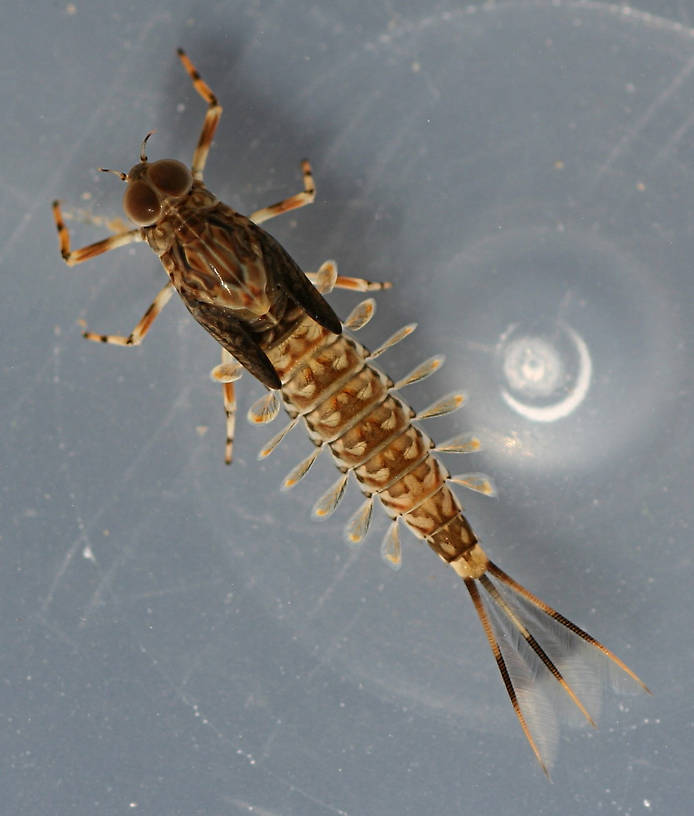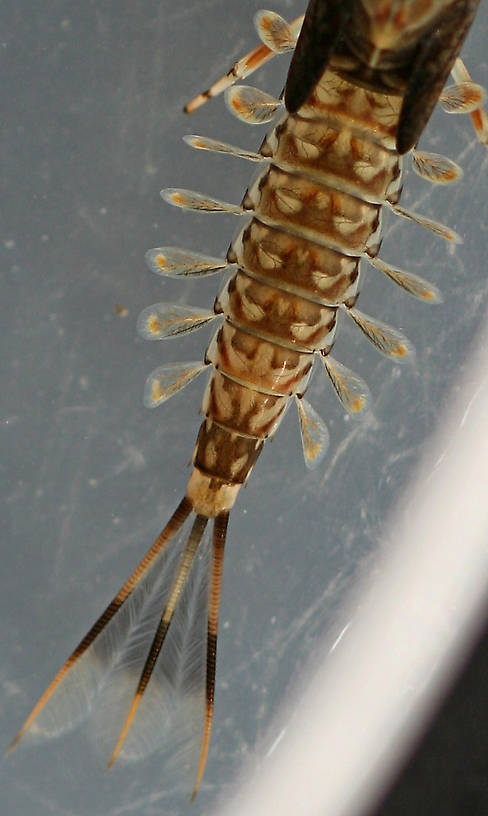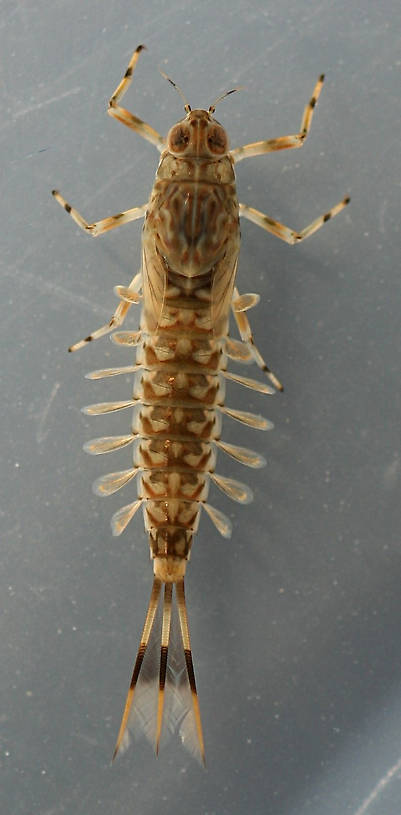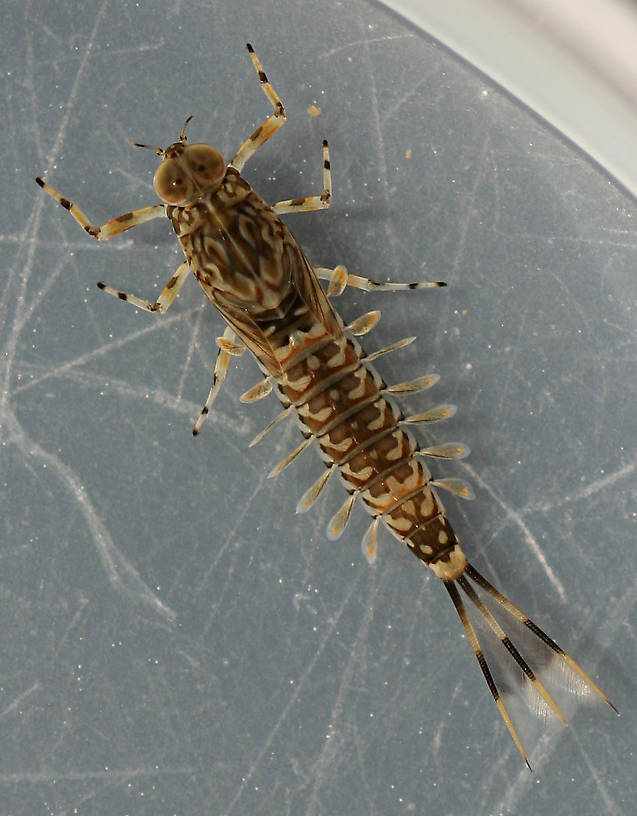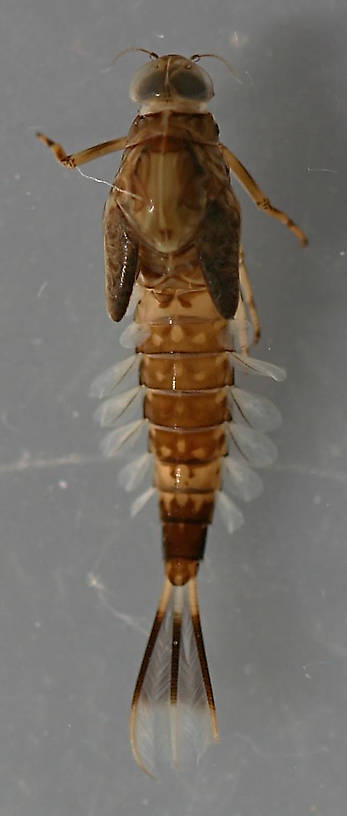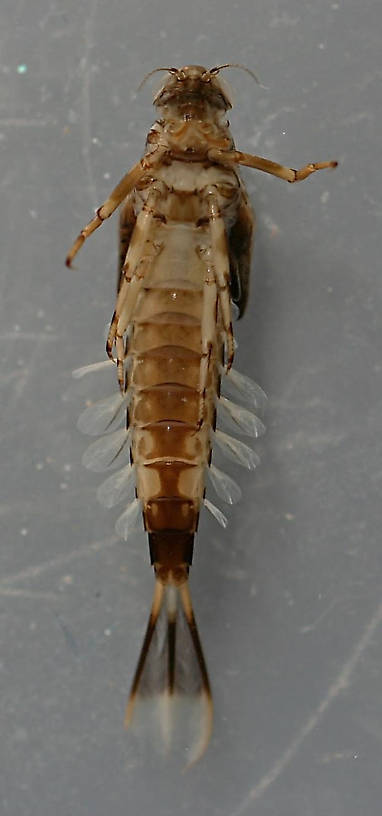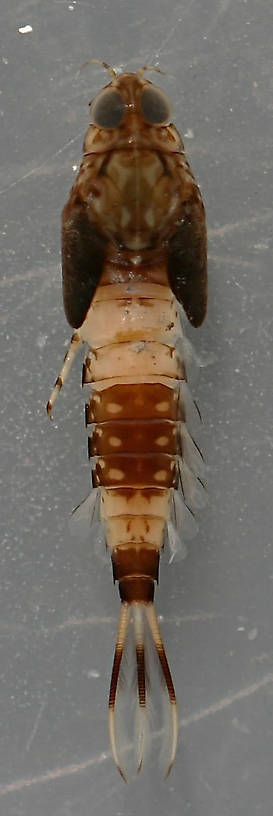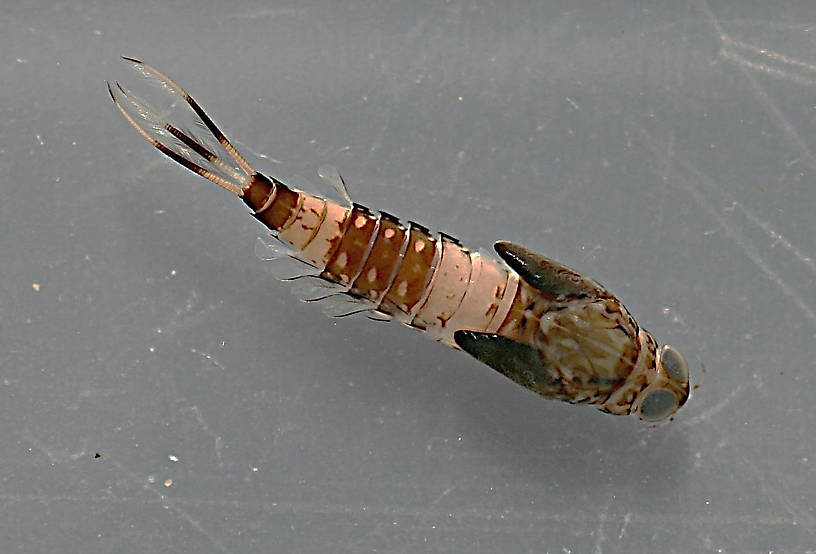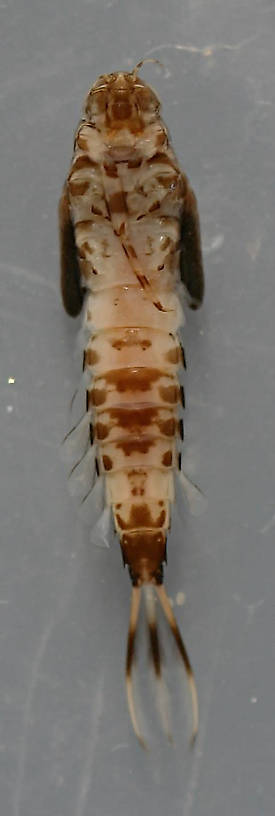Blog & Latest Updates
Fly Fishing Articles
Insects by Common Name


> > Ameletus spp.
| Millcreek | July 20th, 2014, 4:58 pm | |
| Healdsburg, CA Posts: 356 | Yeah, I know the likelihood of getting these IDed to species is unlikely, but I thought I'd see if anyone has any ideas. Meyer and McCafferty list twenty species of Ameletus occurring in California (Mayflies of California 2008) but these are apparently identified from nymphs which seems unlikely since there is no key for Ameletus nymphs of California. The only key I'm aware of which sorta/kinda covers western Ameletus nymphs is Zloty and Pritchard's key to Alberta nymphs (1999) and it doesn't cover a number of the species listed by Meyer and McCafferty. Species #1 is the most common of the three and can be found from early January through mid March. #2 is fairly common and is found from late February through mid March and #3 was found in late March and is uncommon. Measurements are below each picture. Any ideas or additional information would be appreciated. | |
| Taxon | July 20th, 2014, 6:10 pm | |
Site Editor Royse City, TXPosts: 1350 | Hi Mark- Nymphal keys, nymphal descriptions, and distribution of (12 of the 20) California Ameletus species appear in Zloty J; Pritchard G. 1997. Larvae and adults of Ameletus mayflies (Ephemeroptera: Ameletidae) from Alberta. Canadian Entomologist 129:251-289. | |
| Best regards, Roger Rohrbeck www.FlyfishingEntomology.com | ||
| Millcreek | July 20th, 2014, 6:36 pm | |
| Healdsburg, CA Posts: 356 | Roger -The only key I'm aware of which sorta/kinda covers western Ameletus nymphs is Zloty and Pritchard's key to Alberta nymphs (1999) and it doesn't cover a number of the species listed by Meyer and McCafferty. Thanks, I was aware of that reference (though I seem to have gotten the publication date wrong). I'll probably go back to it and give it another try. I'm just a little leery about trying to ID a species using a key that doesn't have 8 of the 20 (more or less) possibilities in it. | |
| Entoman | July 20th, 2014, 7:25 pm | |
| Northern CA & ID Posts: 2604 | Hey Mark, Yes, the painted minnow nymphs/brown duns is another group that is very difficult to nail down. The good news is that maculation patterns (especially tail banding) are still believed to be valid taxonomic characters for species identification, at least as far as I can tell. The bad news is these characters have gone unreported (at least in the public realm) for a good number of the species. If any of your specimens match up in the Zloty keys pretty well, I'd go with that. The fact that many are missing from the keys is not a detriment in this unless future studies prove to show that maculation patterns are unreliable.:) BTW - the same problem of species ID dificulties exist for our leptophlibids and even many of our ephemerellids as well, albeit for different reasons. | |
| "It's not that I find fishing so important, it's just that I find all other endeavors of Man equally unimportant... And not nearly as much fun!" Robert Traver, Anatomy of a Fisherman | ||
| Crepuscular | July 21st, 2014, 10:05 am | |
| Boiling Springs, PA Posts: 923 | Good luck with these specimens. ;) But they sure are beautiful critters. Like you Mark, I have to wonder how Meeyer and McCafferty keyed those specimens out. I have run into the same issues here in PA with Ameletus sp. nymphs. And the ephemerellids... | |
| Oldredbarn | July 21st, 2014, 11:36 am | |
| Novi, MI Posts: 2608 | Good luck with these specimens. ;) But they sure are beautiful critters. Like you Mark, I have to wonder how Meeyer and McCafferty keyed those specimens out. I have run into the same issues here in PA with Ameletus sp. nymphs. And the ephemerellids... Ok boys! Especially Eric...Lay the cane rods down and get to work and add to the keys...Your boots are on the ground...We have discussed here before, the boys in Purdue are few, and they're stretched...Let's do some Citizen Science. :) Spence Oh...by-the-way...I'm going fishing. :) | |
| "Even when my best efforts fail it's a satisfying challenge, and that, after all, is the essence of fly fishing." -Chauncy Lively "Envy not the man who lives beside the river, but the man the river flows through." Joseph T Heywood | ||
| Millcreek | July 21st, 2014, 4:18 pm | |
| Healdsburg, CA Posts: 356 | I've begun to try to key these out using Zloty and Pritchard. So far I've only attempted #1 and it seems to key to Ameletus velox. Since I'm not playing with a full deck (a complete key) I wouldn't swear to it but I think it's as close as I'll get. Kurt - Not so sure about tail banding on the nymphs, The specimens I have show quite a bit of variation among what seem to be the same species otherwise. Also seem to vary according to what stage of maturation the nymph is. Eric - But they sure are beautiful critters.I agree, they're gorgeous little animals. One of my favorite nymphs to see each year. And yeah, it would be nice if Meyer and McCafferty gave more of an explanation as to how they arrived at their IDs. Possibly unpublished data available to them I suppose. Spence - Left you an opening there about not playing with a full deck of cards. | |
| Oldredbarn | July 21st, 2014, 5:45 pm | |
| Novi, MI Posts: 2608 | Spence - Left you an opening there about not playing with a full deck of cards. Mark...We all are suspect on this site! :) Bug obsessed, every damn one of us! See my latest post...Pre-western trip...Need I say more? Spence | |
| "Even when my best efforts fail it's a satisfying challenge, and that, after all, is the essence of fly fishing." -Chauncy Lively "Envy not the man who lives beside the river, but the man the river flows through." Joseph T Heywood | ||
| Entoman | July 21st, 2014, 9:00 pm | |
| Northern CA & ID Posts: 2604 | Mark, Perhaps you're right about the tails. Should have mentioned that I was quoting Zloty about their taxonomic significance. Personally, I haven't a clue... :) Hey Eric - Didn't we look at a few of yours that left us puzzled a few years ago? | |
| "It's not that I find fishing so important, it's just that I find all other endeavors of Man equally unimportant... And not nearly as much fun!" Robert Traver, Anatomy of a Fisherman | ||
| Crepuscular | July 21st, 2014, 9:38 pm | |
| Boiling Springs, PA Posts: 923 | Hey Eric - Didn't we look at a few of yours that left us puzzled a few years ago? Yeah I think so. I can't remember but I think It may have been Ameletus ludens. http://www.troutnut.com/topic/7836/Ameletus#35552 | |
| Entoman | July 21st, 2014, 10:22 pm | |
| Northern CA & ID Posts: 2604 | Yep, that's the one! What a beauty. | |
| "It's not that I find fishing so important, it's just that I find all other endeavors of Man equally unimportant... And not nearly as much fun!" Robert Traver, Anatomy of a Fisherman | ||
| Millcreek | July 23rd, 2014, 12:35 am | |
| Healdsburg, CA Posts: 356 | Eric - That is a little beauty. Was it in a tank or were the photos taken underwater? To all - I went back to Zloty and Pritchard and using their key for Alberta Ameletus nymphs I come up with; #1 - Ameletus velox #2 - Ameletus subnotatus #3 - Ameletus validus Some differences in maculation but the nymphs vary according to how mature they are and also to a certain extent in mature nymphs I've collected. Plus we're not in Alberta. Mouthparts and presence or absence of serrations on the margins of the sternites and posterolateral spines or absence of them all matched. Would I bet the farm on it? No, but given the info I have the IDs seem probable. Mark | |
| Crepuscular | July 25th, 2014, 7:34 am | |
| Boiling Springs, PA Posts: 923 | Eric - That is a little beauty. Was it in a tank or were the photos taken underwater? I have a very small tank set up for underwater photography of live specimens. | |
Quick Reply
You have to be logged in to post on the forum. It's this easy:
Related Discussions
| Title | Replies | Last Reply |
| Re: Fallceon spp. (15 more) In the Identify This! Board by Millcreek | 4 | Nov 21, 2014 by Millcreek |
| subnotatus? In Male Ameletus oregonensis Mayfly Spinner by GONZO | 0 | |
| Re: Epeorus sp. (longimanus?) In the Identify This! Board by Millcreek | 9 | Dec 14, 2014 by Entoman |
| Re: Isoperla nymphs (2 more) In the Photography Board by Millcreek | 6 | Sep 4, 2014 by Oldredbarn |
| Baetis alius In the Identify This! Board by Millcreek | 0 | |
| Re: Another Anthopotamus In the Photography Board by Crepuscular | 4 | Jun 16, 2012 by Entoman |
| Re: Neoephemera In the Identify This! Board by CalebBoyle | 2 | Mar 15, 2008 by Troutnut |
| Re: Dark reddish-brown spinner In the Identify This! Board by Wiflyfisher | 13 | Jul 25, 2014 by Millcreek |
| Re: Invasive Bluegills In General Discussion by CaseyP | 3 | Nov 19, 2007 by Jmd123 |
| More Baetis nymphs (2 more) In the Identify This! Board by Millcreek | 0 |
Troutnut.com is copyright © 2004-2024 Jason
Neuswanger (email Jason). See my FAQ for information about use of my images.
 privacy policy
privacy policy

